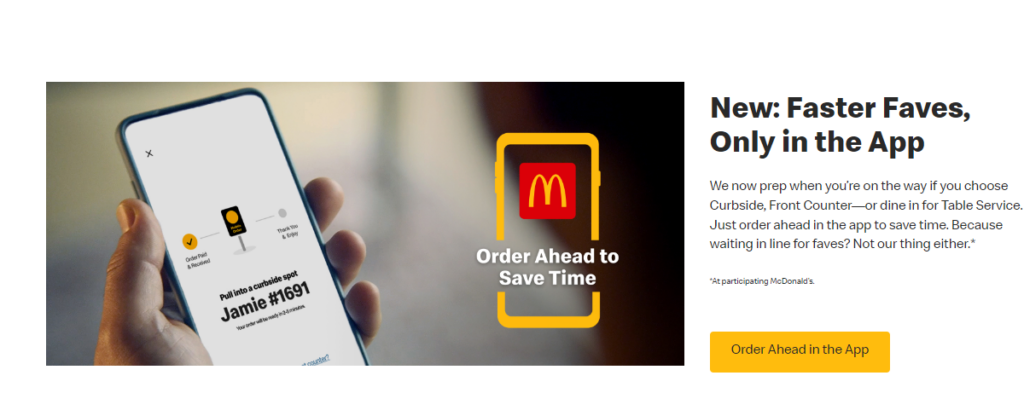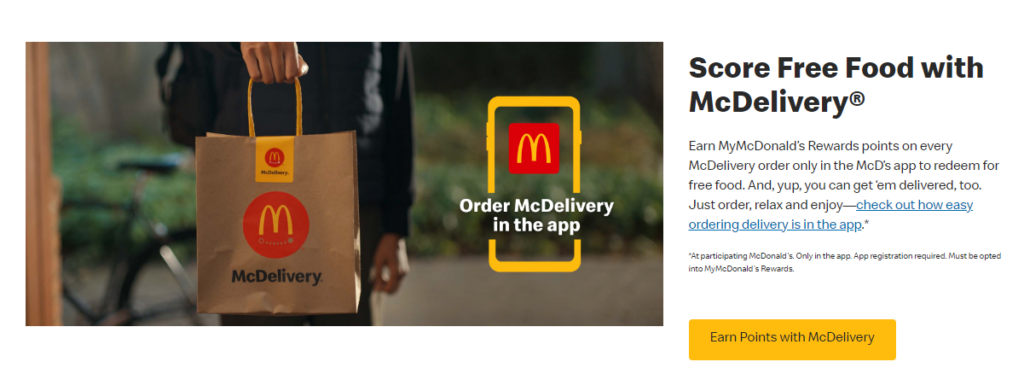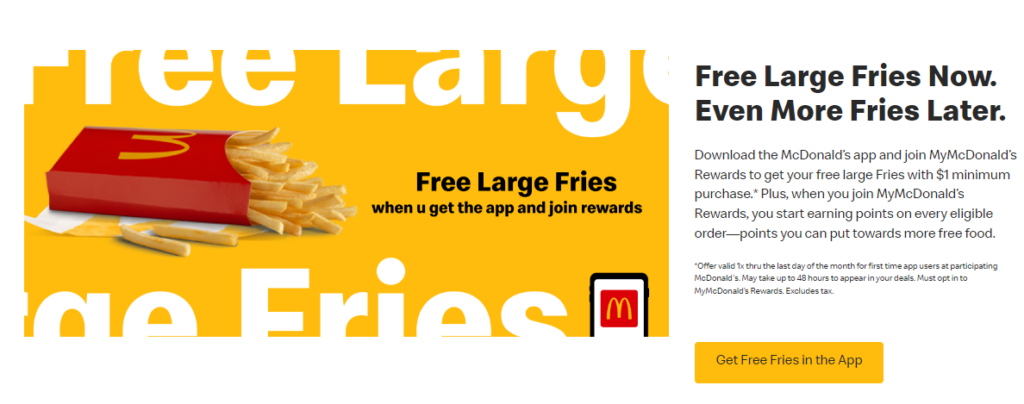Unveiling McDonald’s Marketing Strategy: A Recipe for Success
McDonald’s needs no introduction. It is a name that resonates with people worldwide, representing the epitome of fast-food culture. With its iconic golden arches and extensive network of restaurants, McDonald’s has become a global powerhouse, dominating the fast-food industry. But what sets McDonald’s apart from its competitors? The answer lies in its well-crafted and highly effective marketing strategy.
Purpose of the Article
In this article, we will delve into the depths of McDonald’s marketing strategy, uncovering the key elements that have contributed to its overwhelming success. We will explore the various aspects of McDonald’s marketing approach, from brand positioning and product strategy to pricing tactics and promotion methods. By understanding the inner workings of McDonald’s marketing strategy, we can gain valuable insights and learn lessons that can be applied to other businesses.
What Will Be Covered
Throughout the article, we will discuss the following topics:
- McDonald’s brand identity and its significance
- The Role of product strategy in McDonald’s Success
- Pricing tactics employed by McDonald’s to attract and retain customers
- Promotion strategies that have helped McDonald’s maintain its brand presence
- The importance of place strategy and how it has contributed to McDonald’s growth
- People and customer service strategy, which sets McDonald’s apart from its competitors
- McDonald’s commitment to sustainability and corporate responsibility
By exploring these areas, we aim to provide a comprehensive understanding of McDonald’s marketing strategy, highlighting the key factors that have contributed to its enduring success.
Stay tuned for the upcoming sections as we embark on a journey to uncover the secrets behind McDonald’s remarkable marketing strategy.
Marketing Strategy: The Backbone of McDonald’s Success

In today’s fiercely competitive business landscape, a strong marketing strategy is crucial for any company’s success. McDonald’s understands this better than anyone else. The company has been able to capture the hearts and wallets of consumers through its carefully designed marketing initiatives. By employing a comprehensive and innovative marketing approach, McDonald’s has managed to not only build an empire but also maintain its position as an industry leader.
Understanding McDonald’s Brand Identity
Brand identity refers to the distinctive characteristics and elements that shape how a brand is perceived by its target audience. For McDonald’s, brand identity plays a pivotal role in its overall success and market positioning. Let’s delve deeper into the significance of McDonald’s brand identity and explore its core elements.
Analyzing McDonald’s Brand Identity
McDonald’s brand identity is carefully crafted to resonate with consumers across the globe. Its core elements include:
- Iconic Golden Arches: The golden arches logo is instantly recognizable and symbolizes McDonald’s worldwide. It represents the brand’s prominence and serves as a visual cue for consumers seeking fast, reliable, and familiar dining experiences.
- Playful and Friendly Atmosphere: McDonald’s aims to create a welcoming environment for families and people of all ages. With vibrant colors, comfortable seating, and play areas for children, the brand strives to foster a sense of community and enjoyment.
- Consistent Quality and Taste: McDonald’s is known for its consistent quality and taste, delivering the same satisfying experience across its numerous locations. This aspect of the brand’s identity reassures customers that they can rely on McDonald’s for a reliable and enjoyable meal.
- Menu Variety: Over the years, McDonald’s has expanded its menu to cater to a diverse range of tastes and dietary preferences. By offering a wide variety of options, including burgers, chicken, salads, and breakfast items, McDonald’s ensures that there is something for everyone.
Understanding McDonald’s Target Audience and Positioning
McDonald’s target audience primarily includes families, young adults, and individuals seeking quick and affordable dining options. By positioning itself as a convenient, family-friendly, and value-driven fast-food chain, McDonald’s has captured the loyalty of its target demographic.
Through its strategic brand identity, McDonald’s has established itself as a go-to destination for convenient meals, fun experiences, and a sense of community. Its brand identity serves as a powerful tool in connecting with its target audience and maintaining its position as a global fast-food leader.
McDonald’s Marketing Strategy: Product Strategy

McDonald’s boasts a diverse product portfolio that caters to a wide range of customer preferences. Let’s take a closer look at the variety of offerings available.
Analyzing McDonald’s Core Products and Their Features
- Burgers: McDonald’s is renowned for its hamburgers, which form the cornerstone of its menu. From the classic Big Mac to the iconic Quarter Pounder, these burgers offer a flavorful combination of quality beef, fresh vegetables, and signature sauces. Consistent taste and quality are key features that keep customers coming back for more.
- Chicken Items: McDonald’s also offers a selection of chicken items, such as the McChicken and Spicy McChicken sandwiches. These options provide customers with a delicious alternative to beef-based products, featuring tender chicken fillets, crispy coatings, and a range of accompanying sauces.
- Breakfast Menu: McDonald’s breakfast menu has become increasingly popular, offering a variety of options to start the day. From the classic Egg McMuffin to breakfast burritos and hotcakes, these breakfast items cater to different tastes and preferences.
- French Fries and Sides: McDonald’s french fries are a fan-favorite, known for their crispy exterior and fluffy interior. Alongside fries, customers can enjoy a variety of sides like apple slices, salads, and mozzarella sticks, providing additional options to complement their meals.
Introduction of Limited-Time Offers and Menu Innovations
To keep the menu fresh and exciting, McDonald’s frequently introduces limited-time offers (LTOs) and menu innovations. These offerings serve as a way to attract customers, create buzz, and showcase the brand’s creativity. LTOs often feature unique flavor combinations or special promotions tied to seasonal events or partnerships.
Additionally, McDonald’s embraces menu innovations to cater to evolving consumer preferences. This includes introducing plant-based options, and healthier alternatives, and incorporating local flavors to cater to specific regional tastes.
By regularly updating the menu with new and innovative offerings, McDonald’s aims to provide customers with a variety of choices and experiences, ensuring there’s always something new to discover.
McDonald’s Marketing Strategy: Pricing Strategy
McDonald’s pricing approach revolves around offering affordable and value-driven products to its customers. The company understands the importance of competitive pricing in the fast-food industry and aims to provide quality meals at prices that appeal to a wide range of consumers. McDonald’s utilizes a combination of pricing tactics to achieve its objectives.
Analysis of Pricing Tactics for Various Products
- Value Menu: One of the key pricing tactics employed by McDonald’s is its value menu, which features a selection of items priced lower than the regular menu items. This menu allows customers to choose from a variety of affordable options, such as the Dollar Menu or Extra Value Meals, offering a good balance between price and quantity.
- Bundle Offers: McDonald’s often introduces bundle offers, combining multiple items at a discounted price. These bundles, such as combo meals or family packs, provide customers with cost savings and convenience, encouraging them to purchase more items in a single transaction.
- Limited-Time Promotions: McDonald’s frequently introduces limited-time promotions and special offers to create excitement and attract customers. These promotions often include discounted prices, meal deals, or new product launches at promotional prices. By creating a sense of urgency, McDonald’s drives customer traffic and encourages the trial of new offerings.
Discussion on Value Perception and Affordability
McDonald’s understands the importance of value perception and affordability for its customers. By consistently offering affordable prices and value-driven products, the company has built a reputation as an accessible and budget-friendly option for quick-service meals. The perception of receiving a good deal or value for money enhances the overall customer experience and encourages repeat visits.
Furthermore, McDonald’s pricing strategy takes into account the diverse customer base it serves. By offering a range of menu options at different price points, McDonald’s ensures that customers with varying budgets and preferences can find suitable choices.
In conclusion, McDonald’s pricing strategy focuses on providing affordable options, utilizing tactics like value menus, bundle offers, and limited-time promotions. The company aims to maintain a perception of value and affordability while catering to a wide range of customer preferences.
McDonald’s Marketing Strategy: Promotion Strategy

McDonald’s employs a diverse range of promotional channels and campaigns to reach its target audience and build brand awareness. The company utilizes both traditional and digital marketing tactics to engage with consumers and drive sales.
- Traditional Marketing Tactics: a. TV and Radio Advertising: McDonald’s invests significant resources in TV and radio advertisements to reach a broad audience. These ads promote new menu items, and meal discounts, and showcase the brand’s overall value proposition. The timing and placement of these ads are strategically selected to maximize viewership and listenership. b. Billboard Ads: McDonald’s leverages traditional billboard advertising to reinforce its brand messaging and capture the attention of commuters and pedestrians. These ads are strategically placed in high-visibility, high-traffic areas to generate brand recall and create positive associations. c. Outdoor Ambient Marketing: McDonald’s employs creative and unconventional outdoor ambient marketing techniques to create memorable brand experiences. Examples include using unique placements, such as street markings resembling fries, or large paper takeout bags displayed on major streets to promote specific menu items. These unconventional approaches generate buzz and encourage social media sharing.
- Digital Marketing Tactics: a. Social Media Marketing: McDonald’s actively engages with customers on social media platforms like Facebook, Instagram, and Twitter. The brand encourages customers to share their experiences and pictures of meals, leveraging the growing trend of food photography. Social media also serves as a channel for offering discounts, and coupons, and promoting new products. b. Online Advertising: McDonald’s utilizes online advertising to build brand awareness and generate demand. The company’s online messaging aligns with its TV and billboard ads, adapting the content and language to suit different social media platforms. Additionally, McDonald’s focuses on search engine optimization (SEO) to drive organic traffic to its website, relying on natural search results rather than sponsored keywords. c. Brand Partnerships and Sponsorships: McDonald’s strategically partners with other brands and sponsors various events to expand its reach and appeal to diverse audiences. For example, McDonald’s has collaborated with movie franchises, sports organizations, and popular events to create co-branded campaigns and promotional tie-ins. These partnerships help strengthen brand associations and increase visibility among specific target groups.
Discussion on Brand Partnerships and Sponsorship Initiatives
Brand partnerships and sponsorships play a crucial role in McDonald’s promotion strategy. By aligning with well-known brands, events, and cultural phenomena, McDonald’s enhances its brand image and leverages the existing popularity of these collaborations. Some benefits of brand partnerships and sponsorships for McDonald’s include:
- Expanded Reach: Collaborating with other brands or sponsoring events allows McDonald’s to tap into new consumer segments and reach a wider audience beyond its traditional customer base.
- Enhanced Brand Image: Strategic partnerships with reputable brands or sponsorships of popular events contribute to McDonald’s brand perception. It helps position the company as a trusted and established player in the industry.
- Increased Visibility and Buzz: Co-branded campaigns and sponsorships generate media coverage and social media buzz, creating positive associations and driving the conversation around the brand.
- Targeted Marketing: By partnering with brands or events that attract specific demographics or consumer segments, McDonald’s can tailor its promotional efforts to reach those target groups more effectively.
Overall, brand partnerships and sponsorship initiatives enable McDonald’s to extend its marketing reach, reinforce brand associations, and create memorable experiences for consumers.
In conclusion, McDonald’s employs a combination of traditional and digital marketing tactics, such as TV and radio ads, billboards, social media engagement, online advertising, and strategic brand partnerships to promote its products and build brand loyalty. These promotional channels and campaigns help McDonald’s communicate its brand message clearly and directly while expanding its reach and staying relevant in the fast-food industry.
McDonald’s Marketing Strategy: Place Strategy
McDonald’s employs a well-established distribution system to ensure its products reach customers efficiently. The company utilizes a combination of owned and franchised outlets, along with various delivery services, to make its offerings easily accessible to consumers.
- Owned Outlets: McDonald’s operates numerous company-owned restaurants worldwide. These outlets serve as flagship locations and help maintain consistent brand standards. Owned outlets are strategically located in high-traffic areas, such as busy city centers, shopping malls, airports, and highway rest stops.
- Franchised Outlets: A significant portion of McDonald’s restaurants operates as franchise locations. Franchising allows the company to expand rapidly while leveraging local expertise and entrepreneurship. Franchisees follow McDonald’s standardized operating procedures and branding guidelines, ensuring a consistent customer experience across different locations.
Analysis of Strategic Locations and Store Formats
McDonald’s places great importance on selecting strategic locations for its outlets to maximize customer reach and convenience. The company considers factors such as population density, demographics, foot traffic, and proximity to key attractions or transportation hubs.
- Urban Areas: McDonald’s strategically targets urban areas with high population densities and significant consumer footfall. These locations cater to diverse customer segments, including office workers, students, and tourists.
- Suburban Areas: McDonald’s also focuses on suburban areas, where families and residents often seek convenient dining options. These outlets are typically situated near residential neighborhoods and shopping centers, making them easily accessible to local communities.
- Drive-Thru Restaurants: McDonald’s recognized the importance of drive-thru service early on, and many of its locations offer drive-thru facilities. This format allows customers to quickly order and receive their meals without leaving their vehicles, catering to the needs of time-conscious consumers.
Discussion on Delivery Services and Online Ordering
To adapt to changing consumer preferences and the rise of digital technology, McDonald’s has incorporated delivery services and online ordering into its place strategy.
- Delivery Services: McDonald’s partners with third-party delivery platforms, such as Uber Eats, DoorDash, and Grubhub, to provide convenient delivery options to customers. Through these partnerships, customers can order McDonald’s food and have it delivered to their doorstep, expanding the brand’s reach and accessibility.
- Online Ordering: McDonald’s offers online ordering through its dedicated mobile app and website. Customers can place orders, customize their meals, and select pickup or delivery options. This enhances convenience and allows for personalized ordering experiences.
By leveraging delivery services and online ordering, McDonald’s meets the evolving needs of its customers, offering flexibility and convenience in how they access and enjoy its products.
In conclusion, McDonald’s place strategy combines a network of owned and franchised outlets strategically located in urban and suburban areas. The company emphasizes convenience and accessibility through drive-thru restaurants, partnerships with delivery services, and online ordering capabilities. These distribution channels enable McDonald’s to reach a wide range of customers, providing them with the flexibility to dine in, take out, or have their meals delivered.
McDonald’s Marketing Strategy: People and Customer Service Strategy

McDonald’s places a strong emphasis on its customer-centric approach, recognizing that providing exceptional customer service is crucial for building loyalty and maintaining a positive brand image. The company strives to create a pleasant and enjoyable dining experience for customers of all ages.
- Customer Satisfaction: McDonald’s values customer satisfaction and continuously seeks feedback to improve its offerings. The company conducts primary market research through surveys, questionnaires, and digital channels to gauge customer satisfaction with aspects such as food quality, service, delivery, and overall experience. This feedback helps McDonald’s make informed decisions and tailor its offerings to meet customer preferences.
- Family-Friendly Atmosphere: McDonald’s targets families as a key customer segment. The brand creates a welcoming and family-friendly atmosphere by offering amenities such as play areas for children, Happy Meals with toy promotions, and a menu that caters to diverse tastes and dietary preferences. McDonald’s aims to be a go-to destination for families seeking an affordable and enjoyable dining experience.
Analysis of Employee Training and Customer Service Standards
McDonald’s recognizes the pivotal role its employees play in delivering exceptional customer service. The company invests in comprehensive training programs to equip its staff with the necessary skills and knowledge to meet customer expectations.
- Standardized Training: McDonald’s has a rigorous training program known as “Hamburger University.” This global training initiative ensures consistency in customer service standards across its outlets. The program covers various aspects, including food preparation, cleanliness, order accuracy, and friendly interaction with customers. The training aims to instill a strong service-oriented mindset among employees.
- Continuous Improvement: McDonald’s regularly updates its training programs to address emerging trends and customer preferences. The company conducts ongoing performance evaluations, provides feedback, and offers opportunities for further development to its employees. This focus on continuous improvement helps McDonald’s maintain high customer service standards and adapt to evolving customer needs.
Discussion on Initiatives to Enhance the Overall Customer Experience
McDonald’s implements various initiatives to enhance the overall customer experience and ensure that customers feel valued and satisfied.
- Technology Integration: McDonald’s embraces technology to streamline the ordering process and improve convenience. The introduction of self-service kiosks allows customers to customize their orders and reduces waiting times. The company’s dedicated mobile app enables customers to place orders, access exclusive deals and discounts, and provide feedback. These technological advancements contribute to a seamless and personalized customer experience.
- Menu Innovation: McDonald’s regularly introduces new menu items and limited-time offers to cater to evolving customer preferences. By offering a diverse range of options, including healthier choices and vegetarian alternatives, McDonald’s strives to meet the diverse needs and tastes of its customers. Menu innovation keeps customers engaged and encourages repeat visits.
- Community Engagement: McDonald’s actively engages with local communities through various initiatives. The company sponsors local events, supports charitable organizations, and participates in community outreach programs. These efforts not only contribute to brand visibility but also foster a positive perception of McDonald’s as a socially responsible and community-oriented brand.
In conclusion, McDonald’s places great importance on its customer-centric approach, ensuring customer satisfaction, providing a family-friendly atmosphere, and continuously improving its customer service standards. The company invests in employee training, embraces technology, and introduces menu innovations to enhance the overall customer experience.
McDonald’s Marketing Strategy: Sustainability and Corporate Responsibility
McDonald’s, as a global fast-food chain, has made a commitment to sustainability and corporate responsibility by implementing various initiatives aimed at reducing its environmental footprint and contributing to the well-being of the communities it serves.
In terms of eco-friendly practices, McDonald’s has focused on areas such as waste reduction and responsible sourcing. They have set goals to achieve 100% recyclable or renewable packaging by 2025 and have made progress in phasing out foam packaging. Additionally, they have implemented recycling programs in many of their restaurants and have invested in energy-efficient equipment to reduce energy consumption.
To address responsible sourcing, McDonald’s has established partnerships with suppliers who adhere to sustainable and ethical practices. They have committed to sourcing only verified sustainable beef and have made efforts to source certified coffee and fish from responsibly managed fisheries.
McDonald’s also places significant emphasis on social responsibility and community involvement. They have created programs to support education, promote balanced and active lifestyles, and provide disaster relief. For example, the Ronald McDonald House Charities offer accommodation and support to families of hospitalized children. Furthermore, they actively engage in local communities through initiatives like community clean-up campaigns and youth employment programs.
In conclusion, McDonald’s commitment to sustainability is reflected in its eco-friendly practices and initiatives, such as waste reduction and responsible sourcing. Their dedication to social responsibility and community involvement is evident through programs that support education, health, and local communities. These efforts demonstrate McDonald’s ongoing commitment to being a responsible corporate citizen.
Conclusion
McDonald’s commitment to sustainability and corporate responsibility is evident through its eco-friendly practices, such as waste reduction and responsible sourcing, as well as its focus on social responsibility and community involvement. These initiatives highlight McDonald’s dedication to being a responsible corporate citizen.
Moreover, McDonald’s marketing strategy has played a significant role in its success. The company’s ability to adapt and innovate, coupled with effective advertising campaigns and customer-centric approaches, has allowed it to maintain a strong presence in the competitive fast-food market.
Looking ahead, McDonald’s faces ongoing challenges in a rapidly evolving industry. As consumer preferences and demands continue to change, the company will need to stay ahead of the curve by further enhancing its sustainability efforts, embracing digital technologies, and offering healthier menu options.
Overall, with its strong foundation, commitment to sustainability, and adaptability, McDonald’s is well-positioned to continue thriving in a competitive market while meeting the evolving needs of customers and the broader society.


